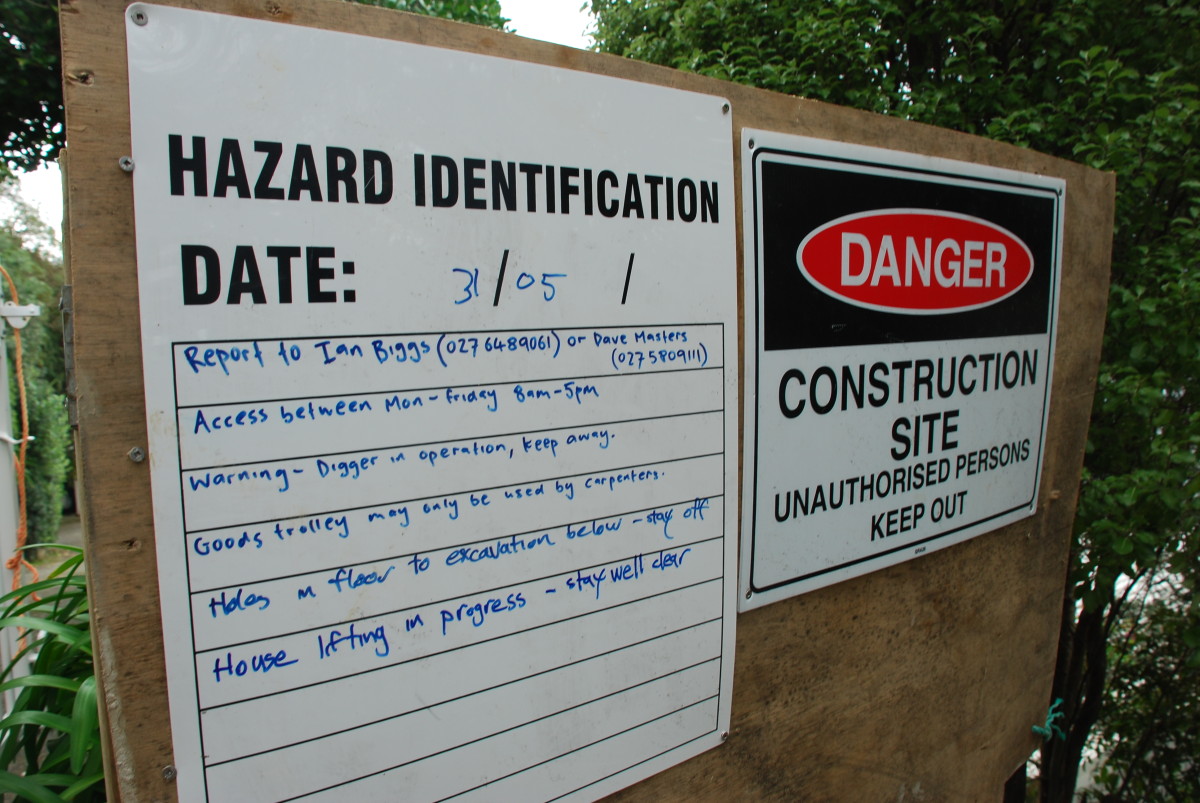Health and safety foundations
02 Sep 2014, Prove Your Know How, Safety

As an employer, it’s your legal responsibility to provide staff and contractors with a safe workplace. Do you have a fully functioning health and safety system in your business?
Systematically identifying and managing hazards, investigating incidents and accidents and providing staff with appropriate training and supervision are the keys to building a functioning health and safety system. It is equally important that your employees and subcontractors understand their responsibilities. Here are some useful steps to help you improve your health and safety systems:
1. Hazard management
- Ensure the hazard board is visible and close to the site entrance.
- Review the hazard board every two days, to ensure it contains the main site hazards and controls.
- Document your ongoing hazard information in a hazard register.
2. Incident/near miss and accident investigation procedures
- Encourage employees to report near misses and incidents.
- When accidents occur, ask open-ended questions to find the root cause.
- Studying near misses and accidents will help identify trends and unknown hazards.
3. Emergency preparedness
- Does your emergency plan cover all potential scenarios?
- Have you developed a plan for each potential emergency situation?
- Does everyone on site know what to do?
It’s important that all ‘what-ifs’ are covered, and everyone knows their responsibilities. Make sure emergency response practices are run on a regular basis to check processes work properly.
4. Training and competency
Your training register should clearly communicate when and where an employee is competent. You should provide your employees with the opportunity to be involved in health and safety processes with toolbox talks and pre-start meetings – you should discuss past accidents, incidents and near misses that have happened on site with your staff. Plan upcoming tasks and ask your staff to voice their health and safety concerns.
Your legal responsibility extends to any subcontractors in your employment.
5. Responsibilities
Employee engagement: Provide opportunities for employees to be involved in health and safety. Toolbox Talk Safety Meetings and pre-start meetings are opportunities to have conversations about preventing harm onsite. Discuss past accidents, incidents and near misses that have happened on site, as well as upcoming tasks and their job safety analysis. Make sure you encourage your staff to voice their health and safety concerns and remind employees that they also have a responsibility for their own safety. Record the minutes of these meetings and save them somewhere safe.
Contractor Management: An employer’s legal responsibility doesn’t stop at their employees, but also includes all their subcontractors. The contractor management policy should include all subcontractors in site inductions and emergency procedures, and require them to develop a site-specific safety plan at tendering stage. It’s also worthwhile to remind your subcontractors that they also have a responsibility for their own safety. Subcontractors should be included in any site inductions and emergency procedures.
About Site Safe
Site Safe is the New Zealand construction industry’s not-for-profit, membership-based organisation that supports, promotes and inspires a culture of health and safety.
We have a range of safety plan products that can fit a variety of business needs. To help review your health and safety system, touch base with your local Site Safe Advisor
www.sitesafe.org.nz l 0800 SITE SAFE l comments@sitesafe.org.nz
Register to earn LBP Points Sign in



